The off-season rain of Hurricane Hilary on August 20 gave a rare opportunity for both warm-season and cool-season weeds to germinate at the same time. I thought I would take advantage by photographing the young seedlings as they came up.
I chose to post here only the weeds that I see most commonly in other yards as well. My aim is to help you identify them when they are small and easy to pull or hoe, and so you can distinguish them from seedlings that you desire, such as vegetables or wildflowers.
Warm-season weeds:
Spurge
Spotted spurge, or Chamaesyce maculata, has milky sap if you break its stem.
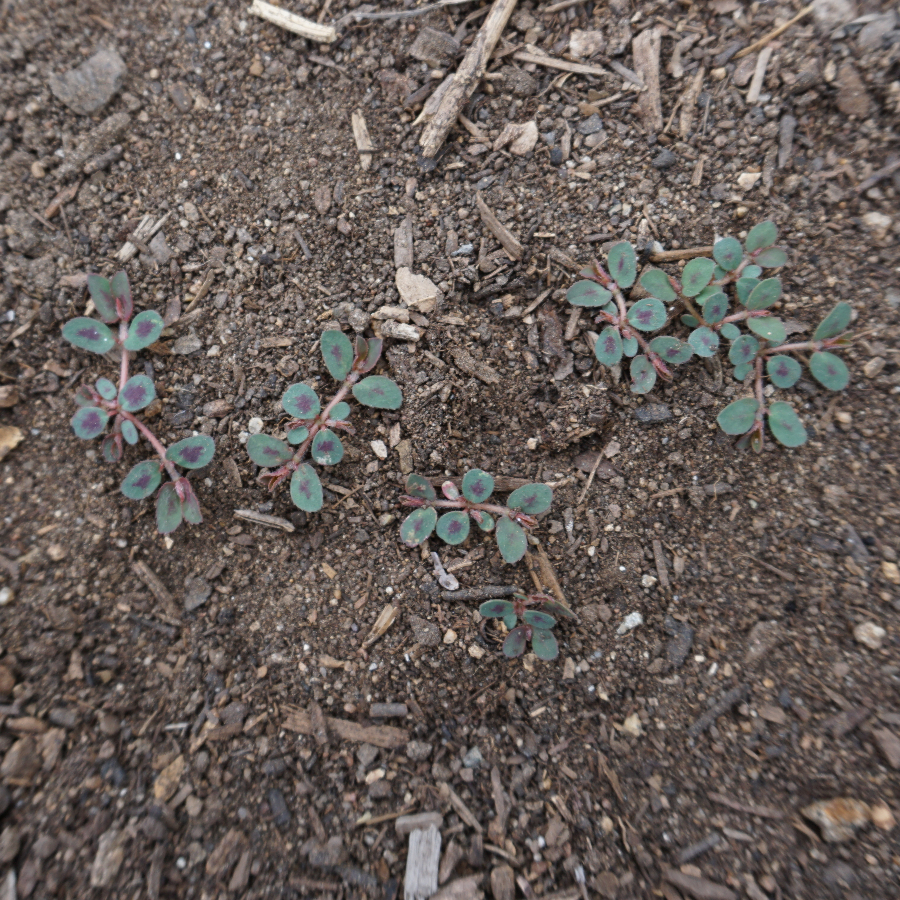
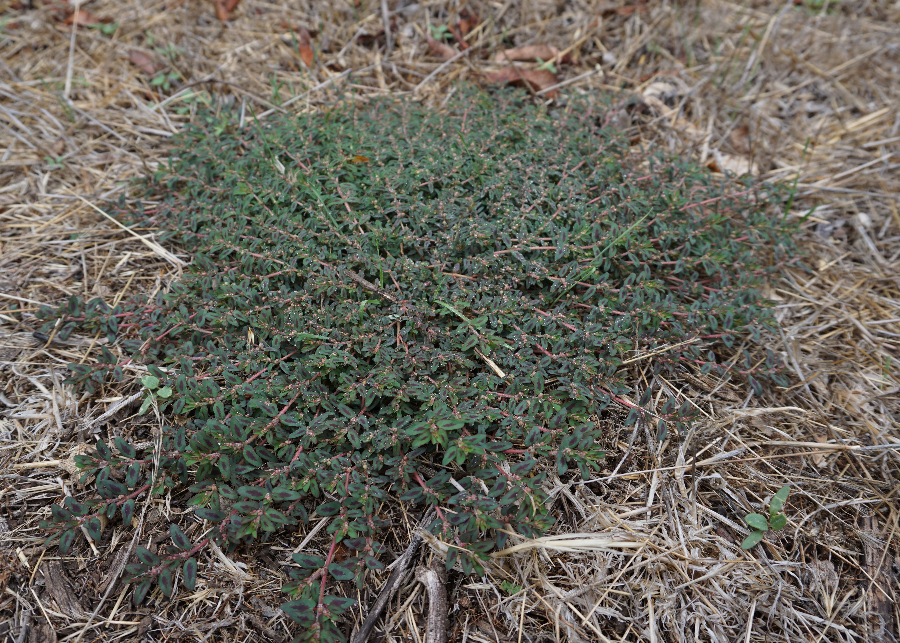
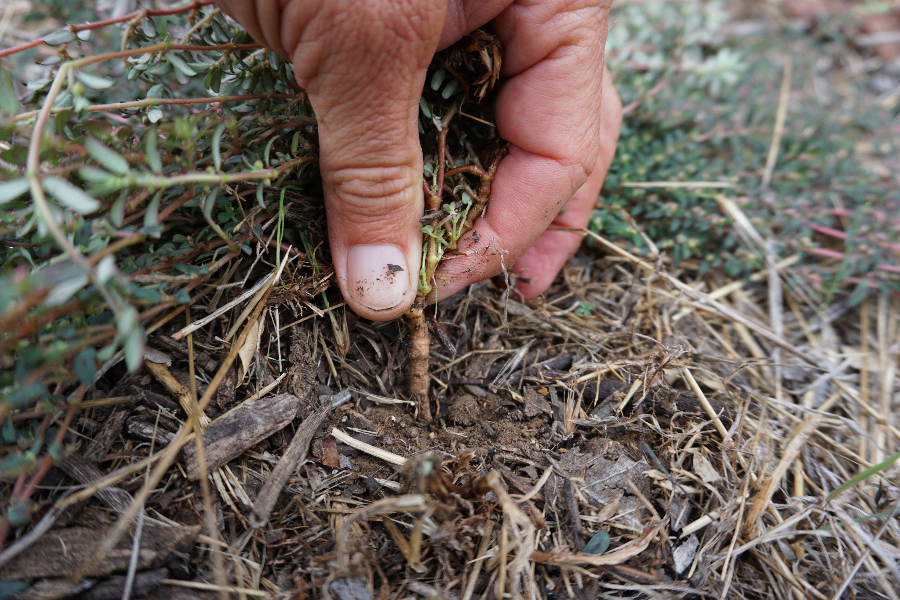
More on spurge here.
Purslane
Purslane, or Portulaca oleracea, has succulent leaves and some people eat it.
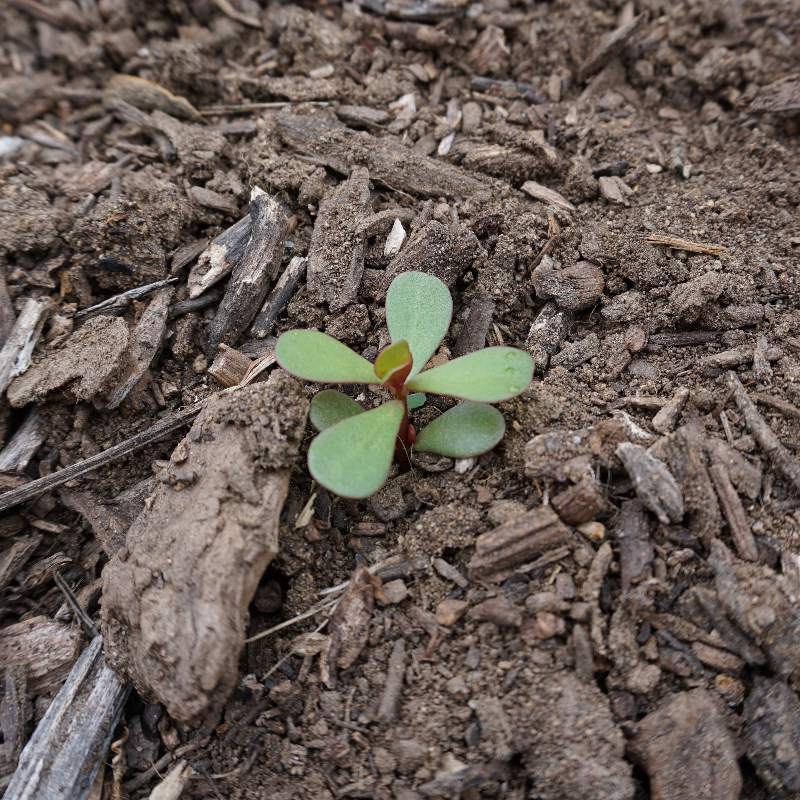
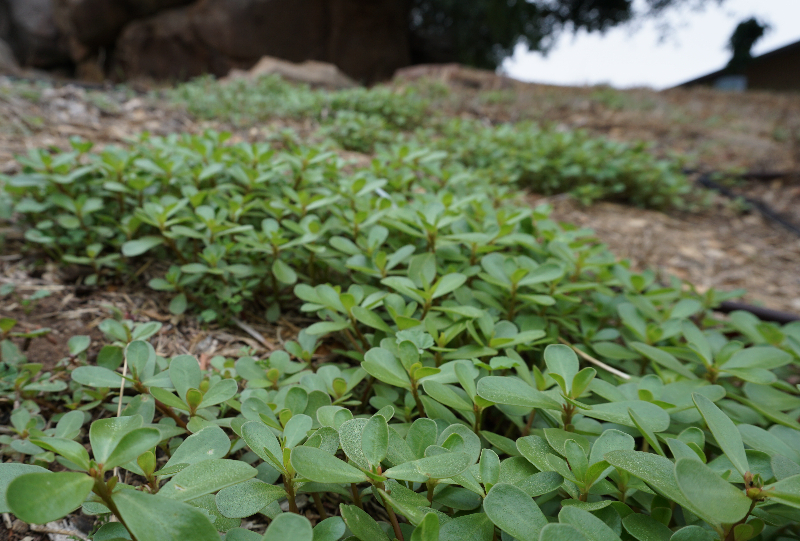
But purslane seeds and spreads so much in Southern California that it can be annoying. Even so, it is otherwise harmless compared to other weeds.
More on purslane here.
Cool-season weeds:
Grasses
Some of the many grasses that grow through the winter in Southern California have dangerous seeds that poke into your socks or your dog’s nose.
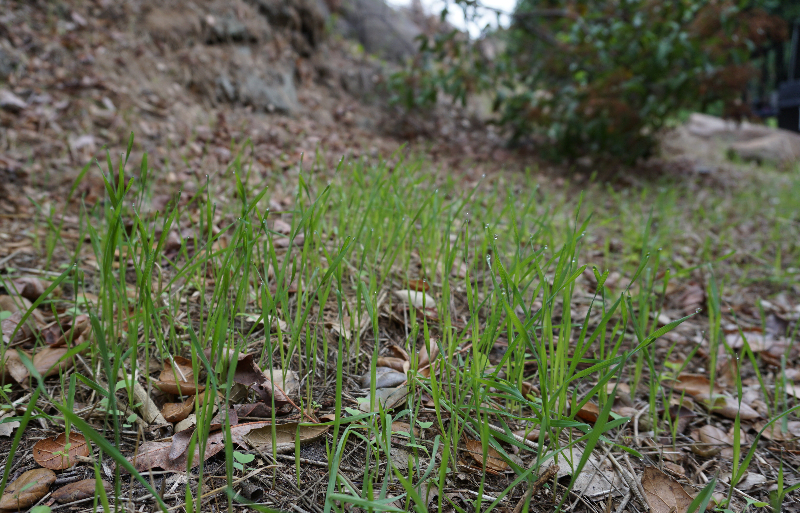
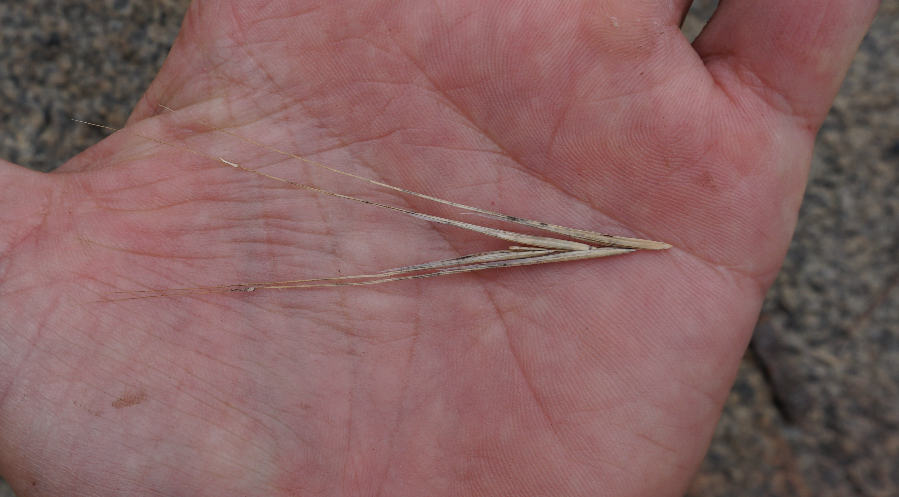
Filaree
Filaree is another winter weed that is pleasant except for its seed.
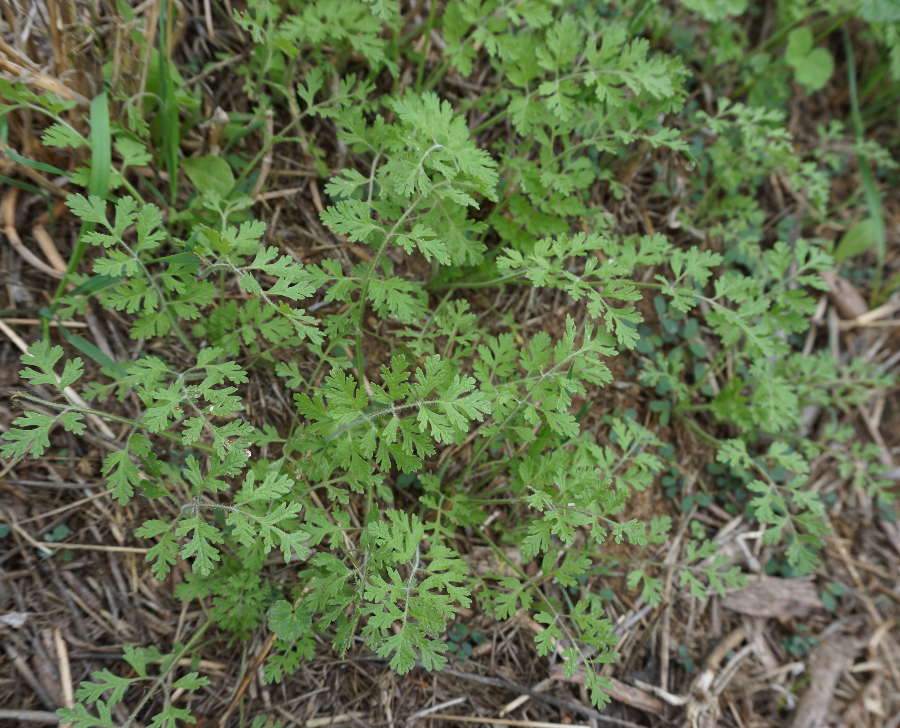
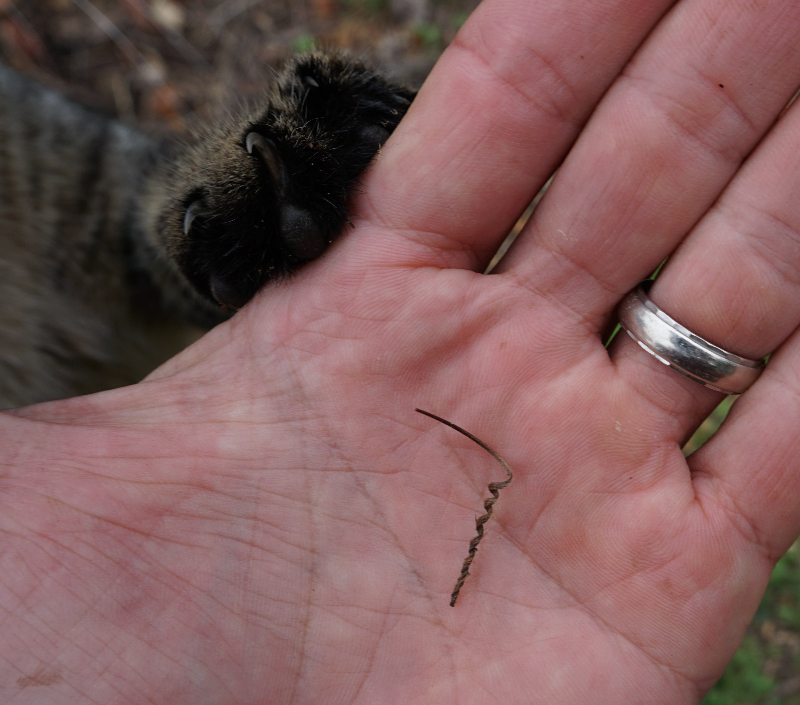
There are different types of filarees (Erodium species), but they all act the same.
More on filarees here.
Thistles
Bees visit thistle flowers too, and chickens enjoy eating their leaves. Yet some types are spiny and hard to garden around.


Here’s more on just one type of the many thistles.
Mallow
Mallow, or Malva parviflora, is also known as cheeseweed because it makes seeds that look like wheels of cheese. This plant has a tap root as strong as a rope! So it’s best dealt with when young.

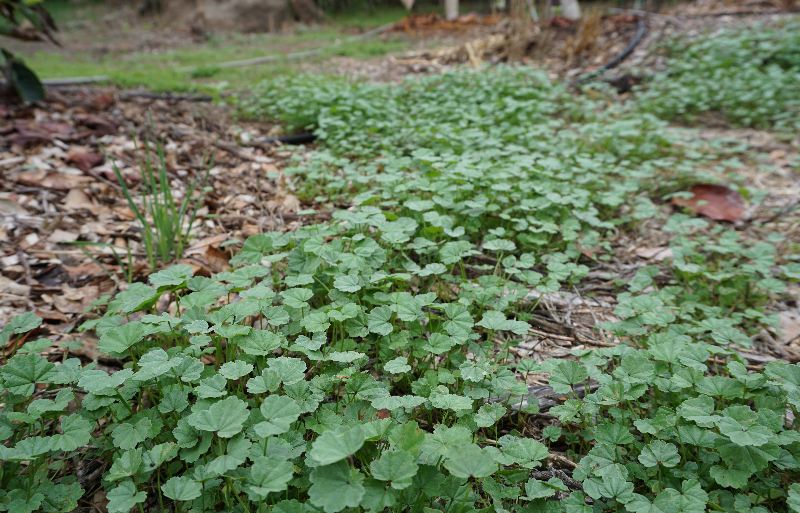
More on mallow here.
I’m sure you have plenty of other weeds in your garden, as do I, but let’s stop there.
What? You want more on weeds? Check out these posts:
Before killing it, name that weed
I won’t complain if you send me a few dollars to help keep my Yard Posts coming and the ads away. In fact, I’ll say a huge thank you!
All of my Yard Posts are listed HERE




Foxtails out! This is the worst for dogs! Not to mention the cost of emergency vet visits.
Question for you is when you pull tomatoes from the garden in SoCal? Last year in NorCal I pulled (not because of production) end of August for convenience (and exhaustion) but this year since we were at least 30 days behind due to weather I’m thinking end of September? We’ve had too many off/on heatwaves that are causing cracking followed by damp overnight temps (more pill bugs) all of which are wreaking havoc on our tomatoes. I’m against harvesting everything at once it is too overwhelming for 1 person – we probably have 200lbs of tomatoes!
In June I was pickling green tomatoes while we twiddled our thumbs waiting for the heat. Now we’ve had yo-yo weather and about to go into another hot weekend. I’ve topped a few of my tomato plants but curious how you guys are handling down south?
Thanks!
Hi Mariangela,
This has been an odd summer for me and my tomatoes too, in that I haven’t removed any plants yet. Usually, I remove my oldest plants sometime in August. This year, since the production was about a month late and I didn’t need the space, I have left them. About half of them also don’t look too bad; that’s unusual too for this late summer date.
I will need vegetable garden space soon though so I’m guessing that a row of old tomatoes will go to composting within the next two weeks. I’ve got lettuce and brassica seedlings that will need to get into the ground.
For me, it’s always a guessing game this time of year. Will the summer cool down abruptly? Or will we have an Indian summer and get tomatoes until Christmas? Never know. But I always try to keep at least a few tomato plants growing in case it stays warm.
how do you get rid of foxtails from the grass? Without using herbicide or things that can be dangerous to pets. Is there a grass that does not allow foxtails to grow?
Awesome! This was right on time.
Greg: you didn’t mention what I call yellow mustard. terrible invasion in my yard . single stem with clustered seed head. am I mis-naming it ?
Ah yeah, I’ve got mustard too. That is another common one. Does anyone drive the 57 near Diamond Bar? When I think of mustard I think of that hill on the west side of that section of freeway that glows with yellow mustard flowers every late winter.
Anyway, I’m ambivalent on mustard as a weed. It spreads like crazy, which is annoying. On the other hand, bees enjoy collecting pollen from their flowers and I pick the leaves to cook as greens so I aim to limit the amount of mustard in my yard but I don’t try to eliminate that one.
thanks Greg
My most difficult weed is nutsedge. It seems to be everywhere. Digging out didn’t work and isn’t possible in many spots. I just cut the tops every day or so and hope to exhaust the rhizomes in a year or two!
Nutsedge! I had a patch of that in my previous garden. The tubers just break apart and spread everywhere if you try digging it out: not a good method. I think your method of consistent topping is the right one. It takes trust and perseverance but it did work for me over time. I left the yard before eradicating it, but at least I did reduce it by doing that.
I have problems with Cynodon dactylon Common names: Bermuda grass; couch grass; devil grass; wire grass; vine grass. Like an underground telephone network!
I became ambivalent about some weeds when I saw wild birds eating their seeds. The truly pernicious weeds are those with deep underground root networks. My worst weed (defined as an unwanted plant) was Japanese honeysuckle. It’s used to stabilize hillside soil and its roots go halfway to Japan!
The funny part is I am purposely tryin to grow purslane (Verdolagas in spanish, my wife loves them) but the wildlife enjoys it so much they eat it all. Had to resort to hanging planters to keep the critters away! For the other weeds, thank goodness for the rain as it helped me uproot the others that had sprouted from earlier in the season, even though it brought many new ones, never ending battle!
I’m glad you mentioned that purslane is edible. For anyone who hasn’t tried it, please do! It is eaten in many cultures and was said to have been Gandhi’s favorite food. It’s delicious, and very high in Omega-3s and other nutrients.
I’m always happy to see it and encourage it to grow by following my Mexican grandmother’s practice of tossing the seed-filled wash water back into the yard. 🙂
Try sauteing it with some tomatoes, onions, and garlic, then add some cooked pinto beans (with their liquid) and season to taste, then top with grated jack cheese. A taste of late summer at our house . . .
I’m so glad you shared this, Donna. I’m going to cook it just the way you suggested.
I hope you like it, Greg. I should have mentioned that it has a unique, somewhat tart flavor that is more pronounced when picked early in the day. And the smaller-leaved variety has a bit more of that flavor than the larger-leaved, which you have pictured above. But it’s ALL good!
Thanks for this guide! I’ve been trying to remember what the filaree seedlings in my yard grew into and came across your blog. My kids enjoy “launching” the seeds (….greaaaaat….), but they’re far less bothersome than the foxtails they’re competing with, so I guess it’s okay for now. In trying to wrangle 5 acres of chaparral, quite a few things that are “fine, I guess,” get to stay.
Thanks Greg! I am currently seeing most of what you mentioned coming up on our property too, along with stinging nettles. About 4 years ago it started showing up on the property, and readily reseeds if allowed to. I don’t really mind it too much, as we harvest the young leaves for eating, and the older ones I dry and save to make teas with. I always think of nettles as a “spring” tonic herb, but this year I guess we’ll eat it in the fall!
Hi Jackie,
Ooh, I haven’t noticed nettle in my yard yet. I have some patches here and there every year though. I’m going to have to look for them now.
I too eat them and so don’t mind them, but I do remove them from certain areas where we walk around the yard barefoot or in sandals.
I laughed at my own response to the 2 1/2″ of rain Hilary brought;” Oh geez, the weeds!!”. How to purge spurge!
Hi Greg, a couple years back I got a load of composted horse manure dumped in the yard. It was contaminated with tribulus terrestris (goathead or puncture vine). It’s the worst thing I’ve ever dealt with in the yard. Any suggestions? I’m in 92026.
Hi Greg, I have a free app on my phone that I really like for identifying weeds called “Picture This”. You take a picture with your phone and hit “Identify”. Not as good at advice, but identification is easy, and quite accurate. Then I read about eradication from other sources.
It seems to be improving the size of the database over time, too.
This is very helpful. Thank you for posting.